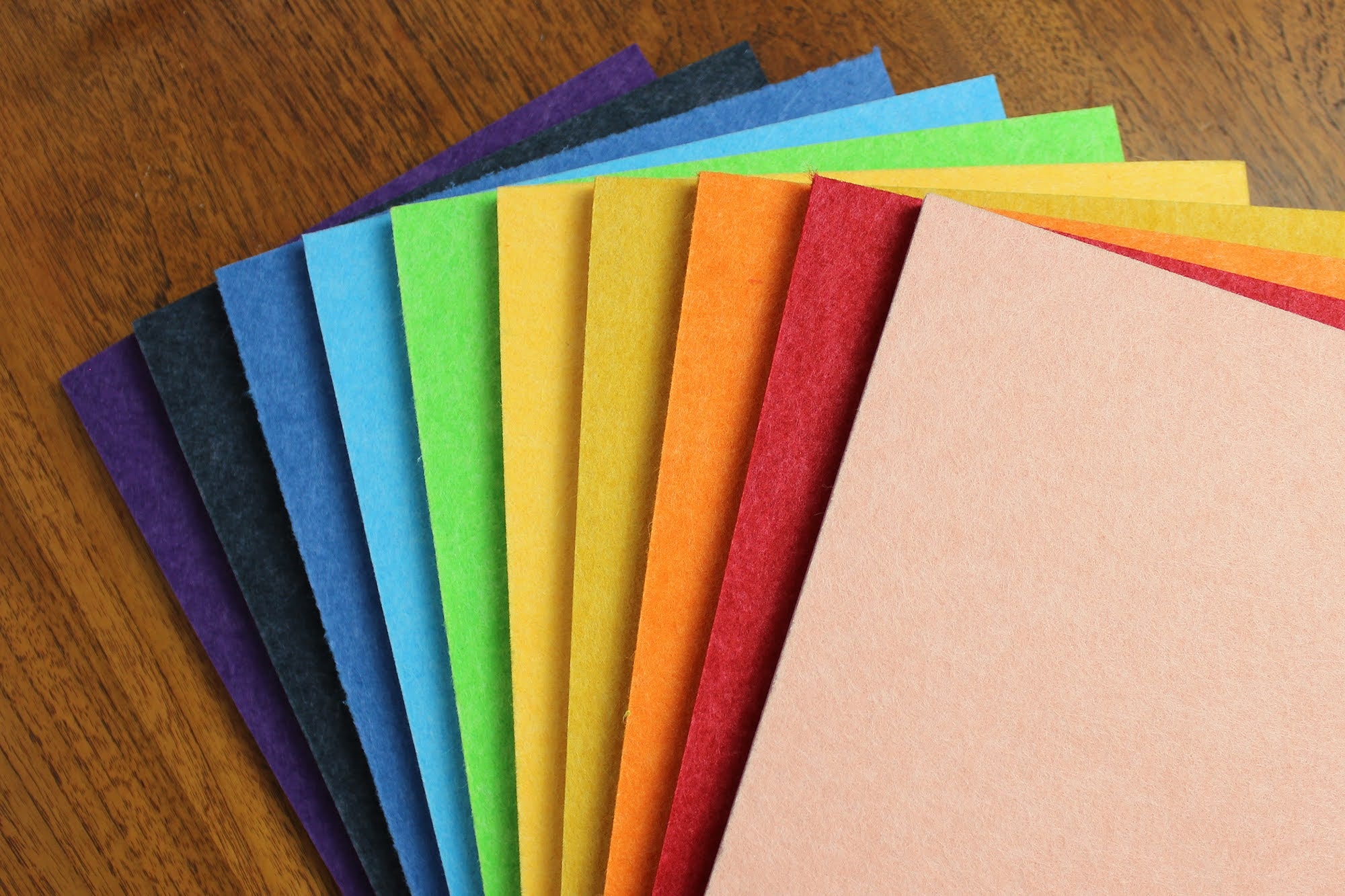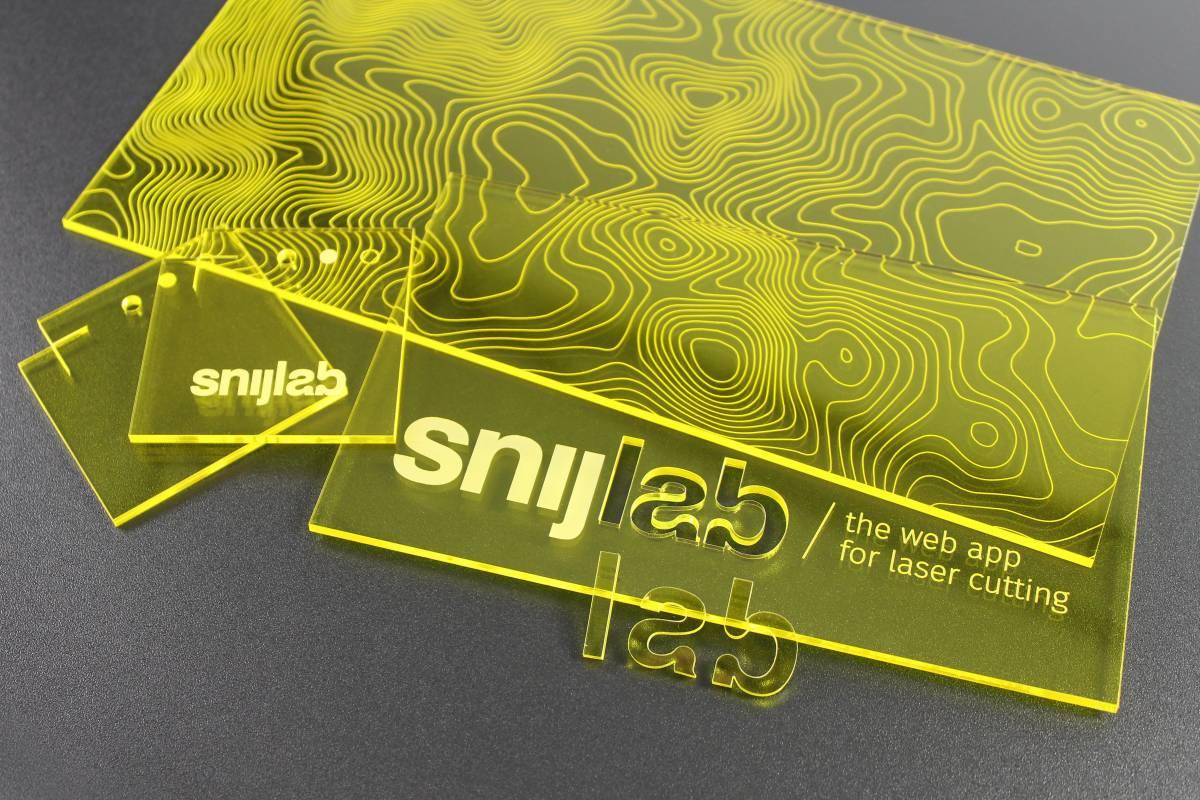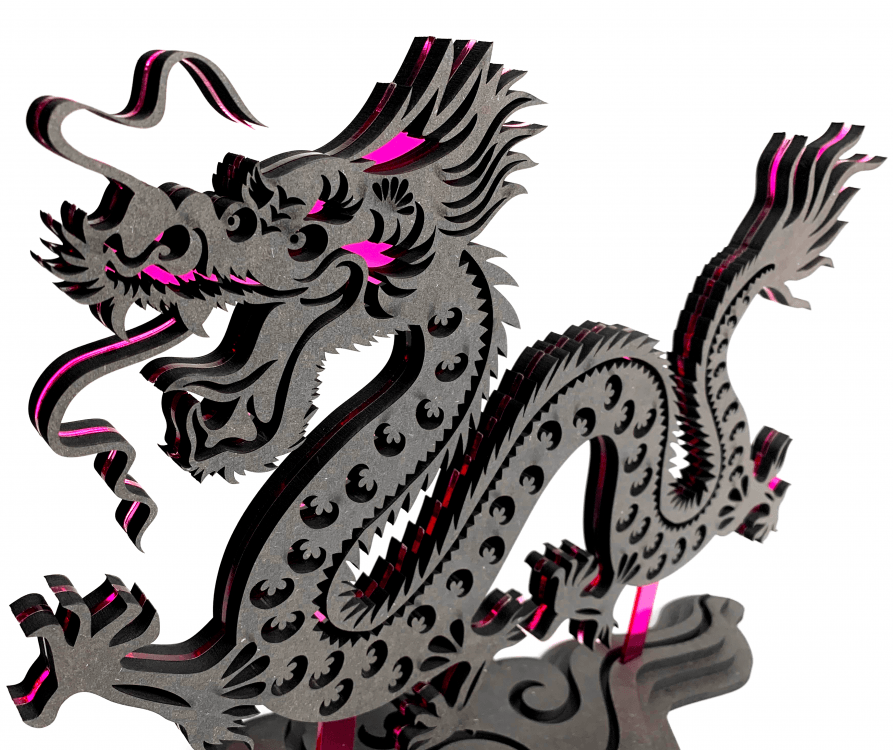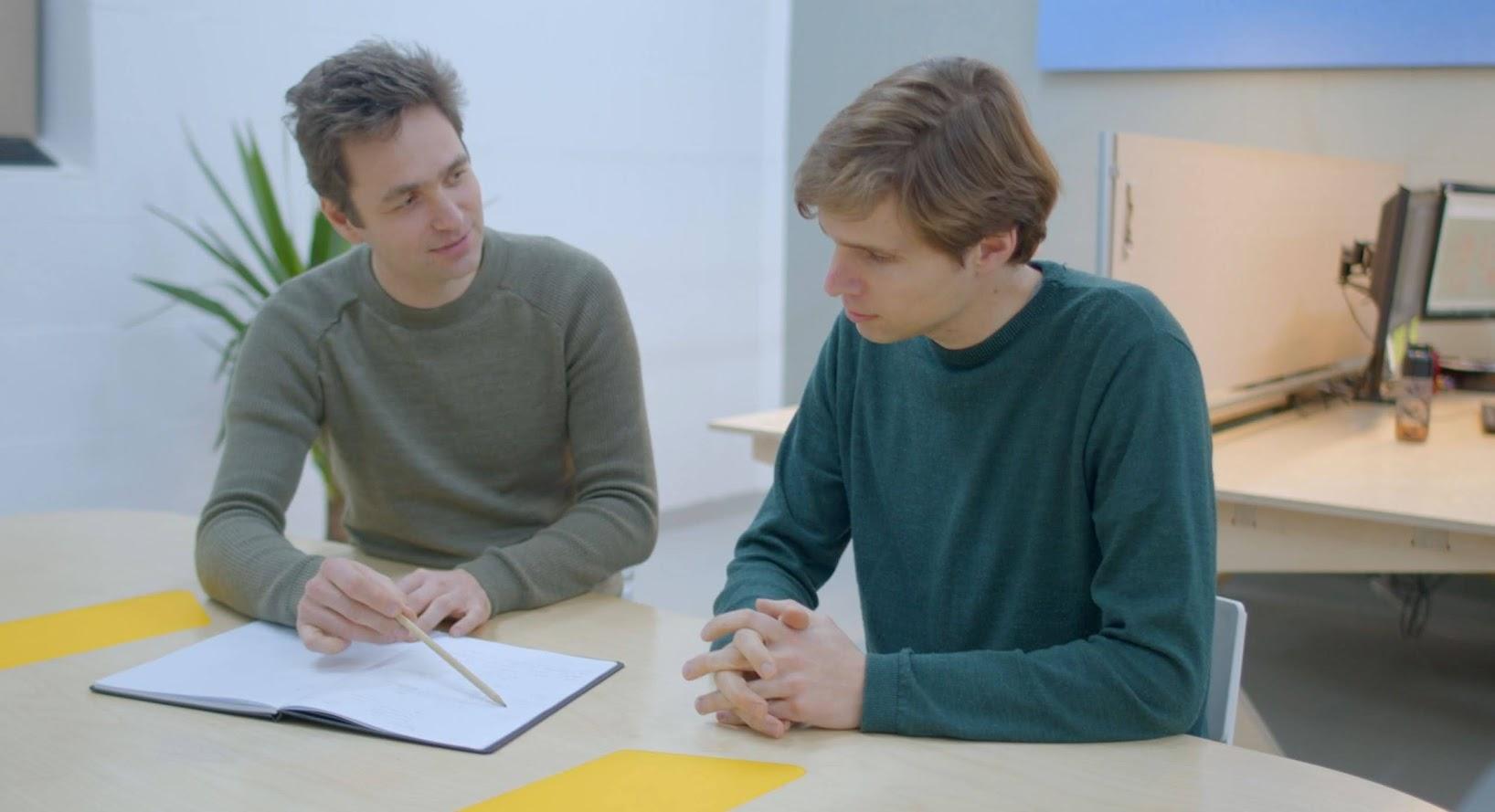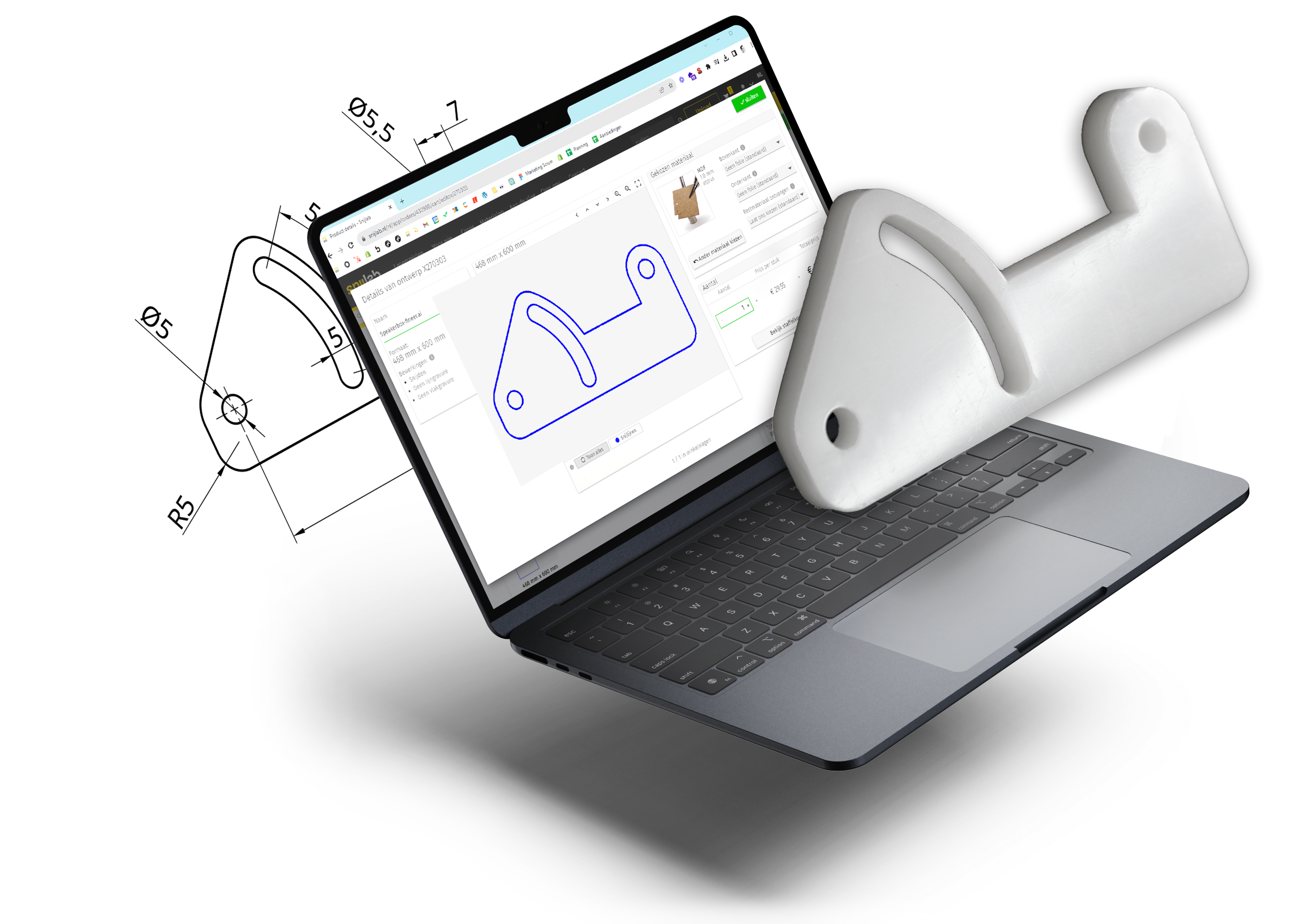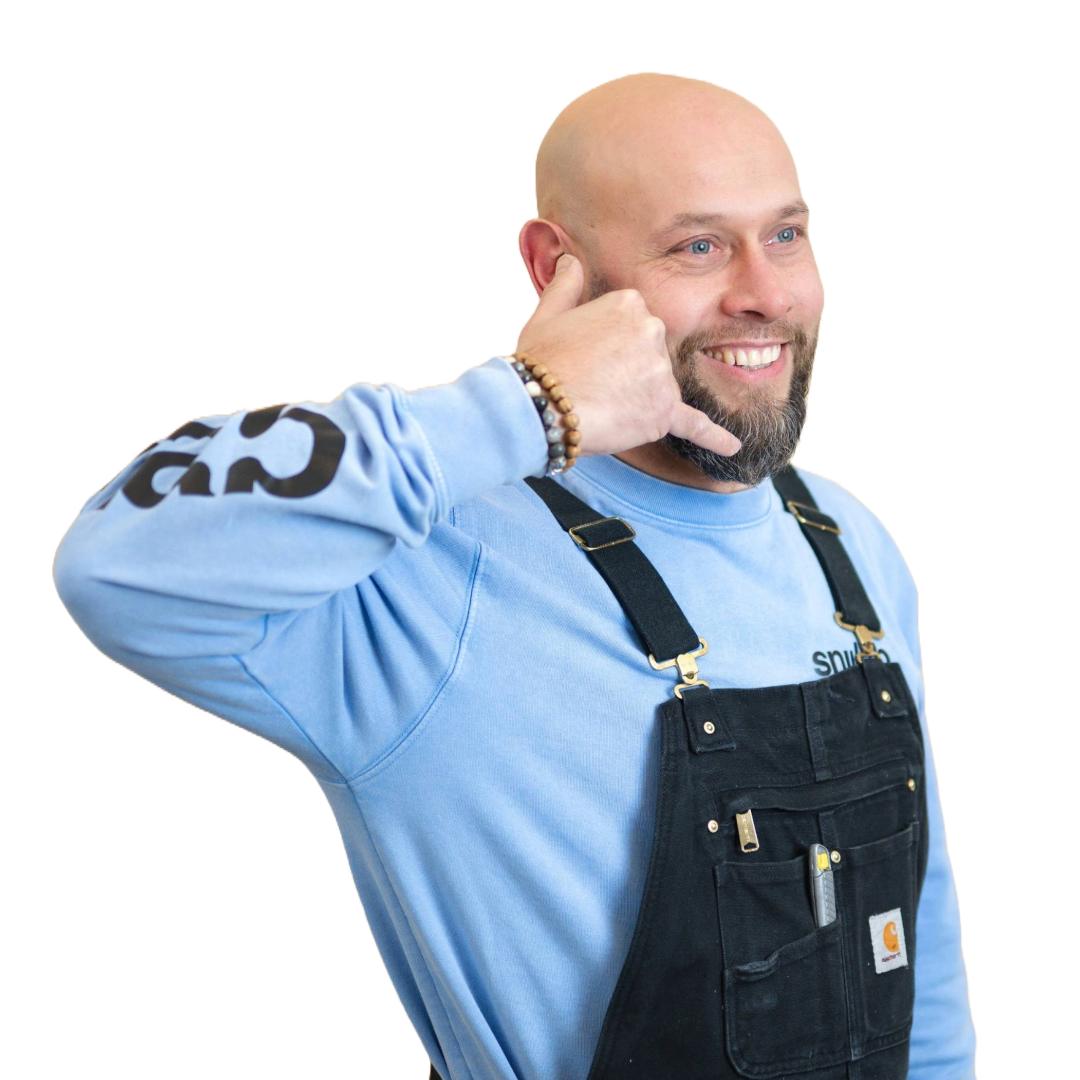Laser cutting is a machining technique by which sheet materials are cut into the correct shape by means of a laser. Laser is the abbreviation for the English term "Light Amplification by Stimulated Emission of Radiation." In laser cutting, a laser cut is made by moving a high-powered laser beam across the material. The laser's light waves move with their peaks aligned, or in phase. Therefore, laser beams are very narrow, very bright, and can be focused to a very small point. Because laser light stays focused and does not fan out much (as a flashlight would), laser beams can travel great distances and make very precise laser cuts. The energy of the laser vaporizes the material.
The cut a laser makes in a sheet material is narrow, on the order of 0.2 mm. You can make a cut start and end at any point and travel any path across the sheet with the laser beam. As a result, there is virtually no limit to the shapes and patterns you can laser cut.
What makes laser cutting such a wonderful machining technique?
Laser cutters can cut complex shapes. The freedom of shape of laser cutters is very great. You can make your own drawing of what needs to be cut, virtually any cad or vector editing program, such as AutoCAD, Illustrator, Solidworks, Fusion 360, etc, is suitable for this purpose. This is a major advantage over more traditional machining techniques such as turning or milling. These techniques require an intermediate step between drawing and machine. This requires separate software (CAM - computer aided manufacturing) that converts the drawing into machine paths. This requires manual work by a well-trained work planner. With laser, there is (virtually) no CAM intermediate step required, making the start-up costs much lower than with milling and turning. Also, these machines use tools (milling cutter and chisel, respectively) that are subject to wear. Laser cutting does not have this.
The cut a laser cutter makes is very precise and narrow. A laser can start cutting at any spot on the material. This allows efficient use of the surface area of the material and results in virtually no material loss.
With laser cutting, no mechanical stress is applied to the material, allowing the laser cutter to cut fragile or brittle material and therefore fragile details in parts can be made. In many cases, no or only minimal post-processing is required.
Work speed is another key advantage of laser cutting. Within a time frame of only a few minutes, a complex shape can be cut from the material using a laser cutter.
Laser cutting is possible in many different materials. We laser cut wood, plastics, textiles, paper and cardboard. These different materials are cut with the same laser cutter. Unlike more traditional processing techniques, different cutting tools do not have to be used for the different materials.
The high repeat accuracy makes it possible to produce parts of consistent and high quality. This makes it possible to produce in series. At Snijlab, we have developed a separate laser cutter for this purpose, allowing us to produce these series without manual loading and unloading
In short, laser cutting is very versatile, fast and durable.
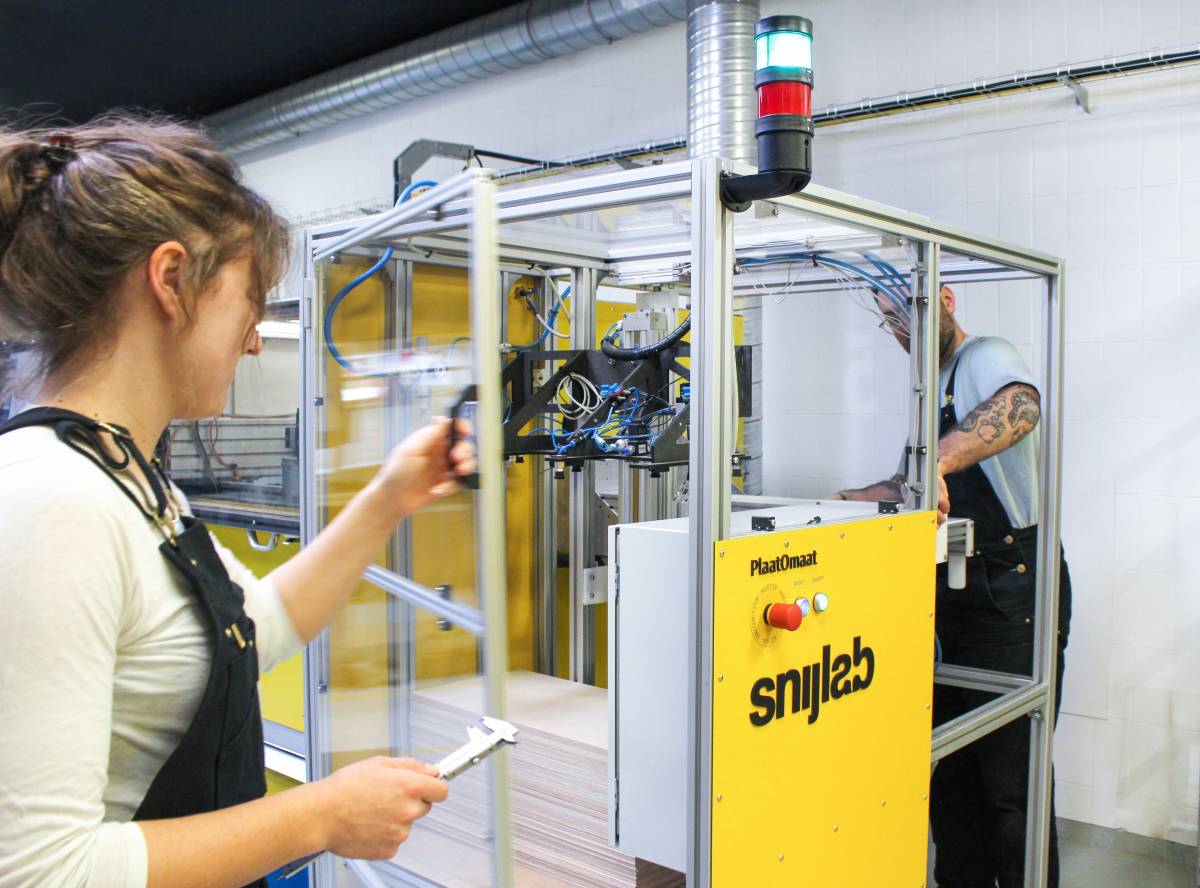
For which materials is laser cutting suitable?
We laser cut wood, plastics, rubber, foam, textiles, paper and cardboard.
We have carefully compiled a versatile range of these materials suitable for laser cutting. You will find materials for a variety of applications, from prototyping to finished products and from model construction to machine building. All of our materials are selected for consistently high quality and applicability.
We are excited about one of our recent acquisitions: black POM (Polyacetal or Delrin). This sheet material is so strong that it can replace metal parts, but cut at Snijlab's speed. We are also very proud of our birch plywood, which is made especially for Snijlab from Finnish wood from sustainable forestry. The gluing is matched to laser cutting, so the edges are nice and light brown and soot-free.
What is laser cutting used for?
Models / Prototypes
Laser cutting is done on the basis of a supplied digital drawing. The laser cutter cuts the lines from the material exactly as they appear on the drawing. As a result, no conversion between drawing and machine is required. This makes laser cutting ideal for making just one or a few pieces of the desired product. A quick switch can be made if the result does not turn out exactly as expected. A change in the drawing is quickly made and the laser cutter can be put back to work.
Large volumes
A unique feature of Snijlab's laser cutting is that we also produce large volumes. We have developed our own special laser cutter for this purpose. With this laser cutter, the sheets of material no longer have to be placed in the machine manually, but this is done automatically. In this way, laser cutting is extremely suitable for producing large runs of parts where precision and accuracy are of great importance.
Also, the cutting quality of this machine is much better than with regular machines so parts have virtually no spots or smoke deposits, which is the case with all lasers on the market. Plastics can therefore be cut and delivered without protective film. The foil does not need to be removed from the (thousands of) parts later. And wood no longer needs to be sanded clean. This smoke- and stain-free cutting saves an enormous amount of time during finishing and makes the difference that makes laser cutting at Snijlab possible that other players in the market do not offer.
Read more about large productions here: How both prototyping and high-volume laser cutting led to the lightning-fast production of face shields during the Covid pandemic.
What does laser cutting cost?
The price is automatically calculated as soon as you upload a drawing through our website. The price of a laser-cut part depends on a number of things:
- Material type
- Dimension
- Print run
- Delivery time
- Cutting length
- Engraving length
Start-up costs are charged with each product. If you order more than one copy, the start-up costs are spread out and the unit price drops. If you order several products of the same material, you will pay lower start-up costs for each subsequent product.
A single piece of a unique part can be had for as little as €20, a large collection plate of an expensive material can exceed €100 and a small part in a series can be laser-cut for as little as €0.10, for example.
Learn more about laser cutting costs read here.

Why laser cutting at Snijlab?
Scalability
In the world of laser cutting plastics and wood, models and prototypes are primarily produced. It is generally assumed that laser cutting of these materials is not scalable. At Snijlab, we believe that laser cutting, combined with proper automation, is well suited to produce custom parts at competitive prices, in Europe. Automated laser cutting is cheaper and faster than 3D printing and milling, and often more flexible than injection molding.
As a result, engineering and design companies do not have to seek refuge with manufacturing companies in low-wage countries, with all the difficulties that entails. Nor is it necessary to order in large volumes when they need something customs. You can simply start with small volumes and then easily scale up your production as required.
So you get the design freedom and innovativeness normally only possible in larger, established companies, with the flexibility and efficiency of a startup.
Creativity
Creativity is at the heart of Snijlab. We believe it is important for engineers and designers to be able to use their full creative potential without being hindered by problems of scale. At Snijlab, they have the freedom to have models and prototypes laser cut as desired, but also to scale up to larger runs when appropriate. This prevents overproduction and avoids surpluses.
Environmentally conscious
Last but not least, we find it very important to act in an environmentally conscious manner. We make it a point every day to minimize our footprint. We research the environmental impact of all the materials we use.
We know what the end of their useful life looks like, how the materials can be recycled. We explicitly share this knowledge with our customers so that they can factor it into their choices. The roof of our factory is full of solar panels that power our machines. When purchasing, we aim for the shortest possible transport routes.
We separate the waste streams of our materials. Our desire is to be able to have each material recycled separately and we are actively working to develop these options. Our wood comes from sustainably managed forests. We ourselves are FSC certified to maintain, where possible, the Chain of Custody.
After reading this article, have you become interested in laser cutting and want to know in more detail what Snijlab can do for you? You can start immediately or take contact at.

